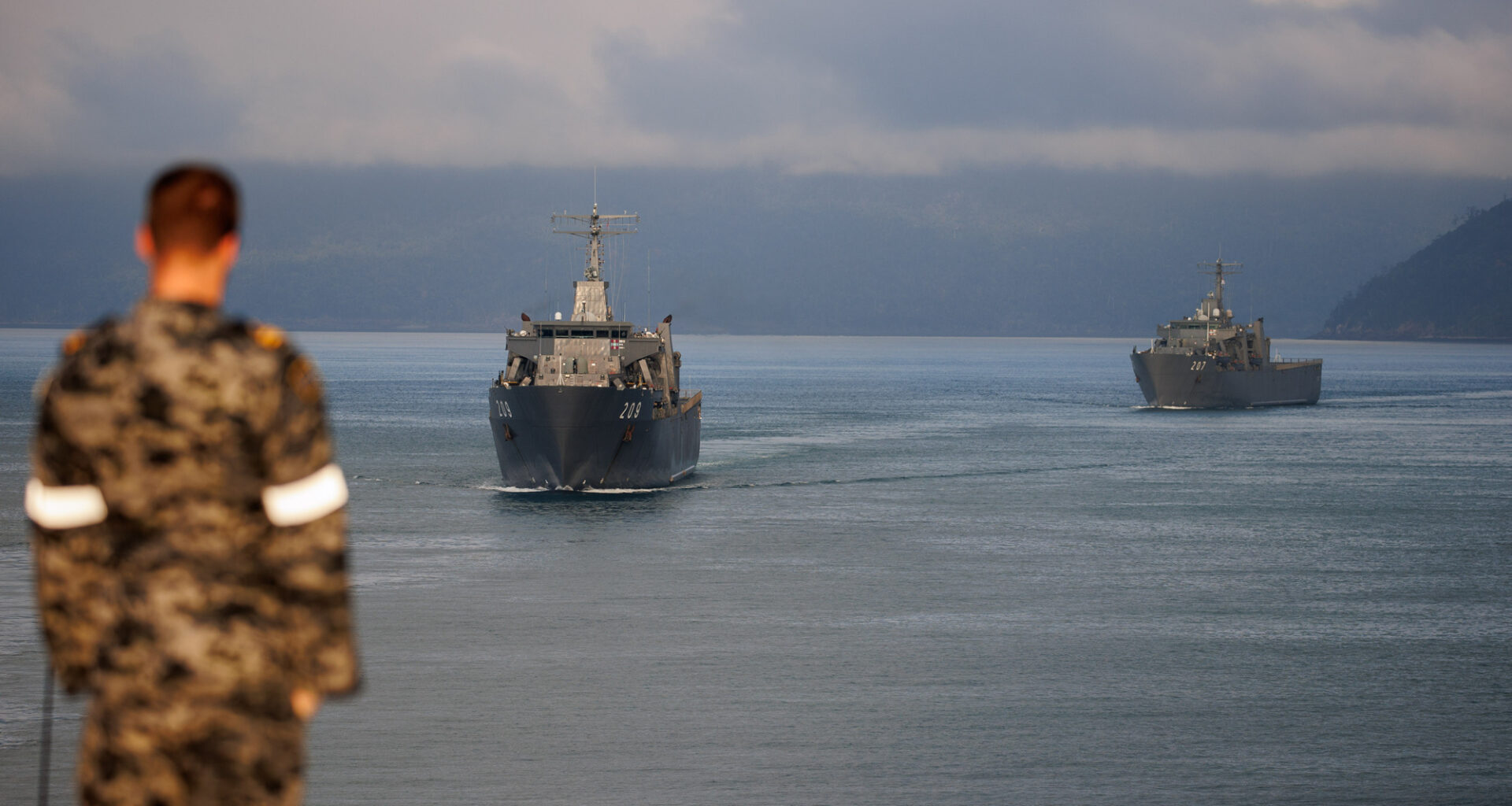New Lowy Institute research published this week examines the state of defence cooperation activities in Southeast Asia, both among Southeast Asian countries themselves and with ten external partners – Australia, Canada, China, France, India, Japan, Russia, South Korea, the United Kingdom, and the United States.
Singapore, a small city-state with the region’s most capable armed forces, provides a distinct case study.
Singapore’s defence cooperation is broad and deep, a deliberate outcome of its long-standing strategy to bolster security, secure overseas training grounds, access advanced technologies, and strengthen operational expertise. Our research shows a clear hierarchy: the United States is Singapore’s leading defence partner outside Southeast Asia, while Indonesia tops the list within the region.
No partnership is deeper than that with Washington. Singapore has signed more defence agreements with the US than with any other partner, underpinned by landmark arrangements such as the 1983 General Security of Military Information Agreement (GSOMIA) for the sharing of intelligence and sensitive information, decades ahead of similar pacts Washington signed with treaty allies like Manila.
The 2005 Strategic Framework Agreement further entrenched cooperation, giving the United States access to military facilities in Singapore to maintain a regional presence, share intelligence, conduct joint training, and foster interoperability. It also opened access for the Singapore Armed Forces to train with and learn from their more experienced American counterparts, as well as benefit from access to advanced American military technology.
Exercises allow Singapore’s military to learn and measure their capabilities with their more experienced and capable American counterparts.
Furthermore, the United States is Singapore’s top military exercise partner from outside Southeast Asia. Bilateral exercises with the Americans are broad – they cover the air, land and maritime domains through exercise series such as Commando Sling, Valiant Mark and Pacific Griffin, some of them decades old.
These exercises allow Singapore’s military to learn and measure their capabilities with their more experienced and capable American counterparts. For example, the Commando Sling air exercises provide Singaporean pilots with the opportunity to operate against aircraft it does not operate, a critical skill set in a wartime scenario.
Singapore also participates in multilateral exercises involving the United States and its partners, such as Australia. These exercises include RIMPAC and Talisman Sabre, the latter jointly hosted by Australia and the United States. These exercises focus on combat operations and require a high level of interoperability.
By contrast, Singapore’s defence activities with China emphasise confidence-building rather than interoperability or joint operations. In 2022, the two sides signed an agreement to enhance military education exchanges, followed in 2023 by a pact to establish a secure telephone line between their defence chiefs.
Military exercises with China remain limited to non-traditional security areas. For instance, the bilateral Exercise Maritime Cooperation 2025, held in May, focused on gunnery, search-and-rescue operations, and medical evacuation drills.
Yet, Singapore’s current defence cooperation is far from China- or US-centric. It has steadily broadened its defence network with middle powers that serve to meet its defence needs beyond just military exercises – such as access to advanced defence technology and access to training and exercising space.
Technology is central to Singapore’s defence strategy, serving as a critical force multiplier for its labour-scarce military. In recent years, Singapore has strengthened its access to defence technology by signing agreements with France and the United Kingdom to deepen research cooperation.
Singapore’s small size makes defence cooperation essential for accessing overseas military training facilities. Agreements with partners such as Australia and India have enabled the Singapore Armed Forces to train abroad. Under the Australia–Singapore Military Training Initiative (ASMTI), for instance, up to 14,000 Singaporean personnel can conduct unilateral training in Australia for periods of up to 18 weeks.
While Singapore has cultivated extensive defence cooperation with major and middle powers around the world, it continues to prioritise relations with its Southeast Asian neighbours, particularly its immediate ones.
Our data shows that, of 130 recorded Singaporean bilateral and multilateral military exercises in 2023 and 2024, around 70% involved Southeast Asian countries, with Indonesia ranking first.
These exercises, such as EX Eagle Indopura (Indonesia) and EX Malapura (Malaysia), could be seen as Singapore’s effort to build trust with its neighbours, but also to maintain interoperability and understanding of each other’s operating procedures. This is important given that they do conduct coordinated air and sea operations, such as the Malacca Strait Patrols, to deal with common security threats.
Singapore’s defence cooperation reflects a deliberate strategy: balance close ties with global powers like the United States while deepening trust with regional neighbours. By combining agreements and joint exercises, Singapore’s defence cooperation with partners safeguards its security, enhances interoperability, and sustains the readiness of a small but highly capable military in an uncertain world.
